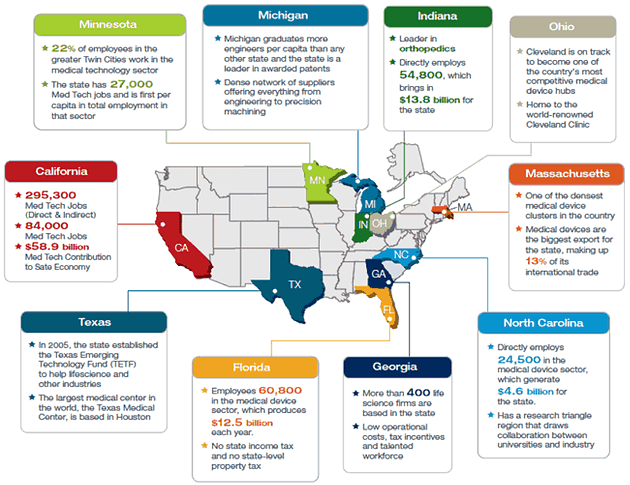The return on investment in marketing and advertising activities has always been tricky. It doesn’t help that sales can be quantified in a number of different ways – dollars, units, share. And then when you add the extra complexity of selling on consignment, slob rates, inventory turnover, contracted pricing, NGOs, it’s no wonder that clearly demonstrating the impact that your marketing dollars are having can be tough!
In the world of pharma, you can track scripts and refills. That data is fairly easy to buy. Not so with medical devices. So what do you?
Here are some different ways to think about marketing metrics for the medical device world
1. Determine your marketing objectives:
Your marketing metrics should be directly tied to your objectives. Hopefully you have already determined your marketing objectives, but if not, take a look at our template for building S.M.A.R.T goals and objectives.
More info on creating S.M.A.R.T Goals
Let’s create a hypothetical situation as an example to use. Say you’re expanding the use of a device you currently market into a new adjacent space – for a new procedure.
- So, one of your objectives could be to educate your current customers that ARE performing this type of procedure but not using your device or technique because they have no idea that it can be used this way. And for these customers, you want to get them to switch from what they’re currently using to your product.
- A second objective could be to educate your current customers that ARE not performing this type of procedure on the procedure and encourage trial and adoption.
- And maybe a third objective is to target surgeons that are currently performing this procedure but not using your device or technique. And for these customers, you want to get them to switch from what they’re currently using to your product.
Which of these would be considered ‘low hanging fruit’? Number 1, right? And which would be considered your second most achievable objective? It could be 2 because the sales force is already at that call point and has already established a relationship with that physician. BUT unless your reps are really good at procedure-based selling, they may not be equipped to actually teach a new technique or procedure to a physician. So depending on the resources you have available and the competancies of your organization, it actually may be easier to get in front of a new physician and try to steal competitive share.
2. Identify what is important to measure and how to measure it:
So often we work with clients who outline their marketing objectives and then maybe define a couple of strategies for meeting said objectives, but there are three additional steps that you can take when building out your marketing plans that will really help you more clearly track the impact of those strategies.
The first is to decide what is important to measure and how exactly you’re going to measure it
- Are you going to look at awareness of the overall procedure?
- Awareness of your product?
- Awareness of your product in the procedure?
- Number of participants registering for a training?
- Number of accounts trialing the device?
- Usage?
And then depending on the metrics you choose, how can you measure those? Can you track awareness via a formal market research study? Could you do a sampling of attendees at upcoming conventions? What about tracking online search volumes, or traffic to specific landing pages on your website. How about rep reported metrics or establishing an early experience trial or usage contest?
3. Define your baseline:
Okay so once you understand what is important to measure, then you have to define your baseline. How many times have we heard that old adage that you can’t get where you’re going if you don’t know where you’ve been? So for our hypothetical, say we choose to measure actual usage. In this case, our baselines could look like this:
- Current customer set: Articulate the number of total CURRENT customers you have and segment that by the number that are currently performing the procedure versus those that aren’t. If you have 1000 current customers and 300 are currently performing this type of procedure then your baseline is:
- 0% usage by 30% of the current customer base
- 0% usage by 70% of the current customer base
- Potential customer set: Articulate the number of total POTENTIAL customers you have and segment that by the number that are currently performing the procedure versus those that aren’t. If you have 2000 potential customers and 800 are currently performing this type of procedure then your baseline is:
- 0% usage by 40% of the potential customer base
Note: in this example we don’t care about the potential customer base that isn’t performing the procedure because that’s a lot of work!
4. Quantify the results you’re looking for:
Finally, once you have an idea of what your baseline looks like, then you can forecast the potential impact that specific brand strategies will have on those different metrics. Make sure that those results are reasonable and take the selling cycle into account. If it generally takes 6 months to close a new customer, don’t expect to convert 15% of your potential customer base by month 3. But maybe that is a reasonable expectation for the 30% of your current customers that are using your device and performing the procedure.
5. Track and adjust:
Once you’ve drawn the line in the sand, have identified your objectives, your metrics, understand your baseline and set your goals, put your strategies in motion! And then track the impact that you’re having whether that’s through formal quarterly reviews, monthly reportings, weekly calls, whatever it is, just don’t let the good work go to waste. Because by tracking what you’re doing and the results that you’re able to achieve you can make adjustments throughout the year that will better ensure that you hit every one of the milestones you’ve set for the year.
So there you have it. 5 steps for creating meaningful marketing metrics for med device marketeers!
- Determine your objectives
- Identify what is important and how to measure it
- Define your baseline
- Quantify the results you’re looking for
- Track and adjust
And if you are still hungry for more – click below for a deeper dive into Step #2. A little cheat sheet 6 Metrics that Matter Most (to your boss that is).








